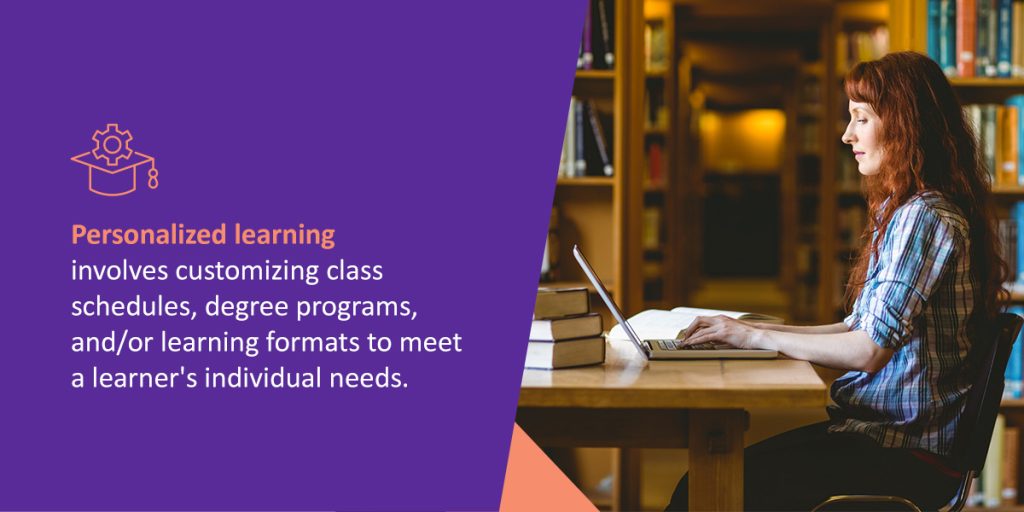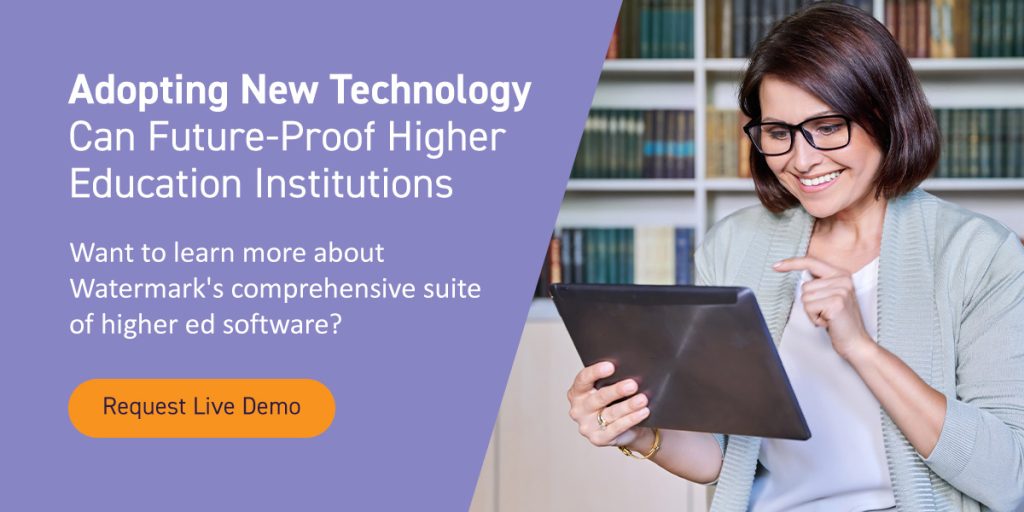




Our world is changing at a dizzying pace, and technological advancements and economic development are displacing many of the jobs that were so common years ago. The way people approach higher education is changing as well. The world today’s students are entering is causing some of them to feel increasingly negative about pursuing a degree.
Institutions must reconsider the traditional higher education model to better prepare college students for their careers and stay competitive.
Most people go to college to gain the skills and knowledge they need to pursue their desired career, but today’s workforce requires significantly different skills than the labor market of tomorrow.
Institutions face a growing list of challenges to student success post-graduation, which only contributes to the growing sense of apathy among students.
With advanced technologies like AI and automation expanding into almost every industry, workers should try to constantly refresh and expand their existing skill set to remain employable. Retraining and upskilling throughout one’s career is rapidly becoming the norm among working professionals.
This need for ongoing education is shifting the general mindset toward higher education away from traditional two- or four-year degree programs and toward more flexible options. For example, online learning platforms like Coursera, edX, and LinkedIn Learning provide quality education at the learner’s own pace, so people can pursue the credentials and skills they need without having to invest as much time and money into a full degree or certificate.
In today’s job market, employers are more likely to prioritize job readiness over traditional academic credentials. Recruiters specifically look for human skills that technology simply can’t replicate:
Students can develop these skills in many ways, including experiential learning opportunities and micro-credentialing programs. However, these opportunities are still unavailable at most U.S. institutions, leading academically promising students to enter the workforce without the practical skills they need to truly succeed beyond graduation.
With many countries setting goals to reach net zero carbon emissions by 2050, many businesses feel a growing pressure to prioritize sustainability initiatives. And that pressure extends across virtually every industry, from manufacturing to health care to civil engineering.
It makes sense that demand for “green” skills and knowledge is on the rise. Employers across almost every industry look for job candidates with expertise in areas such as:
Students can learn many of these skills through experiential learning opportunities like internships, co-ops, and work/study programs. However, institutions need to begin placing higher emphasis on these programs to bring more students to them.
We saw how quickly the pandemic transformed the traditional workforce. Experts predict that, over the coming years, we’re likely to see similar changes — and sticking to the tried and true higher education model is unlikely to prepare students for a brand-new labor market.
Here are three ways higher education institutions can use advanced technology to better prepare for the job market of the future.
With such dramatic changes affecting the market, it’s possible that skills in high demand today could become irrelevant in a few short years. Workers need to constantly learn new information and skills to stay up to date with the latest technology and industry practices.
That’s why “lifelong learning” has become one of today’s biggest higher ed buzzwords. Some employers are stepping up to offer in-house training programs, while many workers turn to online education platforms.
Adult learners — students over 25 who are pursuing further education after spending time in the workforce — now make up about 40% of enrollment in higher education. Higher education institutions must offer more flexible learning options to engage this population.
In today’s economy, most students need education beyond what the standard classroom model can provide them. Advanced education software can help institutions provide personalized learning plans to nontraditional learners.

Personalized learning involves customizing class schedules, degree programs, and/or learning formats to meet a learner’s individual needs. For example, adult students who work full-time will naturally require a more flexible class schedule than new high school graduates entering their first semester of college.
Many institutions partner with local employers in various fields to provide their students with internships, co-ops, and similar learning opportunities. Students benefit from this talent pipeline, which increases their likelihood of gaining employment in their field after graduation. This type of arrangement is especially advantageous for programs with fieldwork requirements, such as nursing or teaching.
Local partnerships also often benefit the company’s employees by letting them take advantage of ongoing learning courses and other professional development opportunities. This situation significantly expands your potential learner pool, which can help bring in additional revenue and protect your bottom line.
The rise of generative AI has brought with it unique concerns for higher education, and many institutions have banned its use in the classroom to prevent academic dishonesty. But banning AI — and technologies like it — may actually be a critical mistake for higher education.
Failing to provide students with adequate experience in new technologies can hinder their career readiness. For example, a recent survey of 309 HR managers revealed that a working knowledge of AI tools is now one of the most desirable skills a job candidate can have.
A curriculum map can help educators identify skills and learning gaps in specific courses of study, which can uncover potential areas for improvement. Program assessments can also be beneficial, as they help educators understand whether their students can achieve the outcomes necessary for success beyond graduation.
In a future where tech is becoming an increasingly integral part of our lives, institutions must implement new tech tools to adequately prepare their students for the workforce.
At Watermark, our mission is to provide higher education institutions with tools that enable more effective curriculum planning, keep students engaged, and empower continuous improvement. With our fully integrated software suite at your fingertips, your institution will have what you need to move toward the future with confidence.
Want to learn more about Watermark’s comprehensive suite of higher ed software? Click here to request a live demo.






























































































































































































































































































































































































